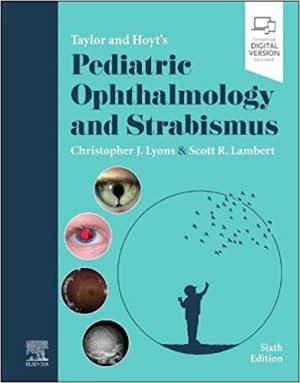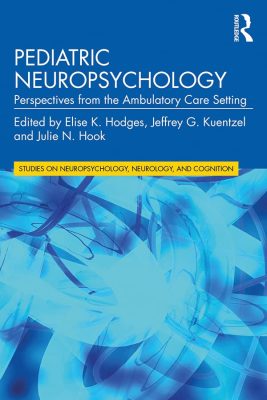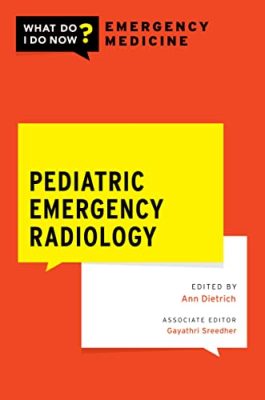Burns’ Pediatric Primary Care 7th Edition
Get a comprehensive foundation in children’s primary care! Burns’ Pediatric Primary Care, 7th Edition covers the full spectrum of health conditions seen in primary care pediatrics, emphasizing both prevention and management. This in-depth, evidence-based textbook is the only one on the market written from the unique perspective of the Nurse Practitioner. It easily guides you through assessing, managing, and preventing health problems in children from infancy through adolescence. Key topics include developmental theory, issues of daily living, the health status of children today, and diversity and cultural considerations. Updated content throughout reflects the latest research evidence, national and international protocols and standardized guidelines. Additionally, this 7th edition been reorganized to better reflect contemporary clinical practice and includes nine new chapters, revised units on health promotion, health protection, disease management, and much, much more!
- Four-part organization includes 1) an introductory unit on the foundations of global pediatric health, child and family health assessment, and cultural perspectives for pediatric primary care; 2) a unit on managing child development; 3) a unit on health promotion and management; and 4) a unit on disease management.
- UNIQUE!Reorganized Unit – Health Supervision: Health Promotion and Health Protection – includes health promotion and health protection for developmentally normal pediatric problems of daily living and provides the foundations for health problem management.
- UNIQUE!Reorganized Unit – Common Childhood Diseases/Disorders has been expanded to sharpen the focus on management of diseases and disorders in children.
- Comprehensive content provides a complete foundation in the primary care of children from the unique perspective of the Nurse Practitioner and covers the full spectrum of health conditions seen in the primary care of children, emphasizing both prevention and management.
- In-depth guidance on assessing and managing pediatrichealth problems covers patients from infancy through adolescence.
- UNIQUE! Practice Alertshighlight situations that may require urgent action, consultation, or referral for additional treatment outside the primary care setting.
- Content devoted to issues of daily living covers issues that are a part of every child’s growth ― such as nutrition and toilet training ― that could lead to health problems unless appropriate education and guidance are given.
- Algorithms are used throughout the book to provide a concise overview of the evaluation and management of common disorders.
- Resources for providers and families are also included throughout the text for further information.
- Expert editor team is well-versed in the scope of practice and knowledge base of Pediatric Nurse Practitioners (PNPs) and Family Nurse Practitioners (FNPs).
- NEW! Nine new chapters include:
-
- Unique Issues in Pediatrics
- Genetics and Child Health
- Environmental IssuesChildren with Special Healthcare Needs
- Developmental Management of Newborns
- Intentional and Unintentional Injuries: Injury Prevention and Child Maltreatment
- Perinatal DisordersDevelopmental, Behavioral and Mental Health Disorders
- NEW! Updated content throughout reflects the latest developments in our understanding of disease processes, disease management in children, and current trends in pediatric healthcare including Bright Futures and Healthy People 2020.
- UNIQUE!Reorganized Unit – Common Childhood Diseases/Disorders has been expanded to sharpen the focus on management of diseases and disorders in children.




 Through clinical cases and interviews with working professional, Case Studies in Pediatric Dysphagia takes an original approach to understanding pediatric dysphagia. With an increased need for clinical education, this text covers topics such as differential diagnosis, medical terminology, and goal setting. Written with group interaction and collaboration in mind, the book provides role play scenarios, suggestions on how to delve deeper into the case studies, and goal setting and evidence-based treatment approaches. Each chapter is structured to begin with a case study and end with a detailed interview with a professional working with pediatric dysphagia, providing a complete and thorough view of the topic in a reflective and practical way.
Through clinical cases and interviews with working professional, Case Studies in Pediatric Dysphagia takes an original approach to understanding pediatric dysphagia. With an increased need for clinical education, this text covers topics such as differential diagnosis, medical terminology, and goal setting. Written with group interaction and collaboration in mind, the book provides role play scenarios, suggestions on how to delve deeper into the case studies, and goal setting and evidence-based treatment approaches. Each chapter is structured to begin with a case study and end with a detailed interview with a professional working with pediatric dysphagia, providing a complete and thorough view of the topic in a reflective and practical way.
 Part of the “What Do I Do Now?: Emergency Medicine” series,
Part of the “What Do I Do Now?: Emergency Medicine” series, 



